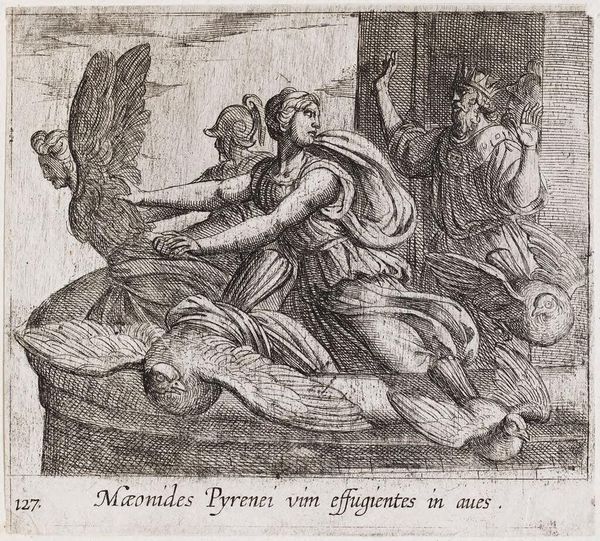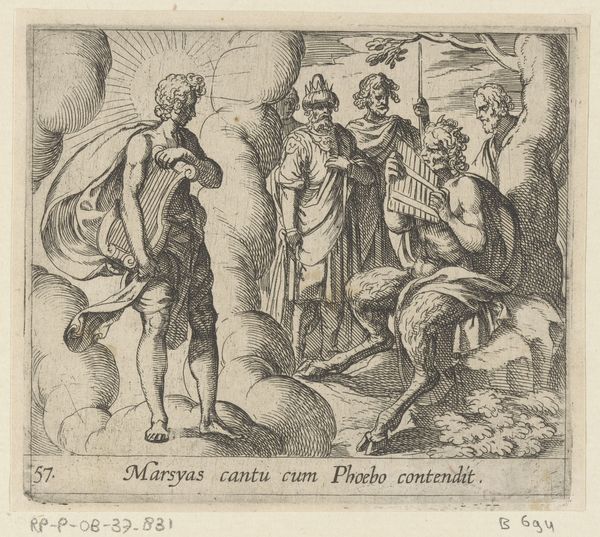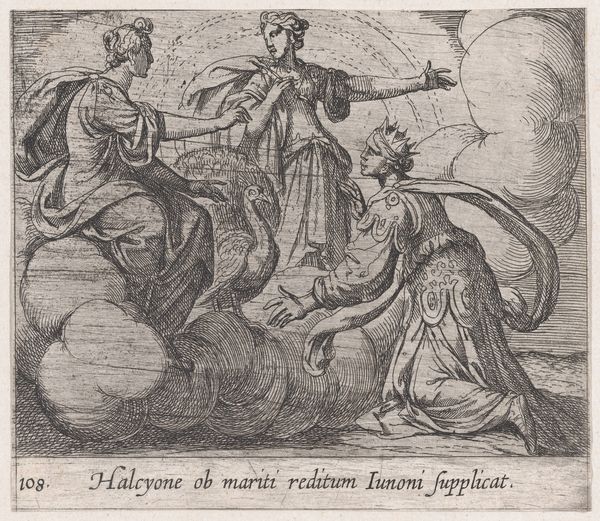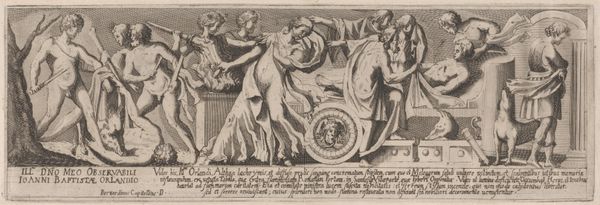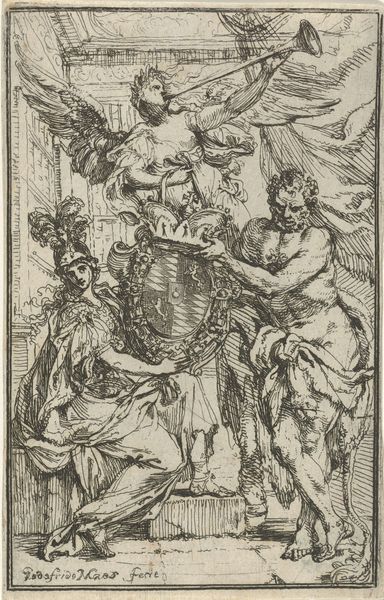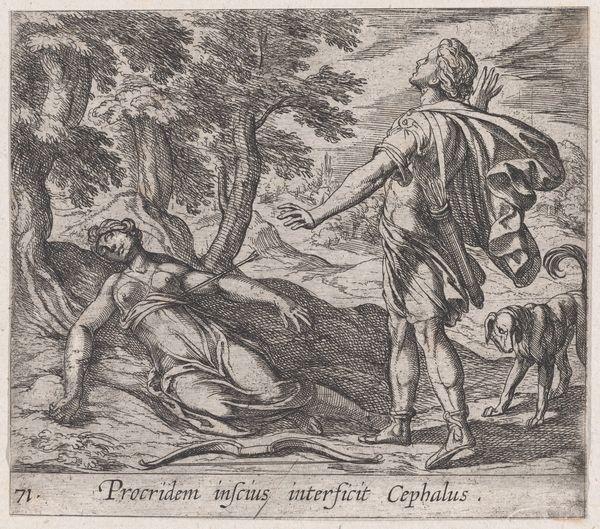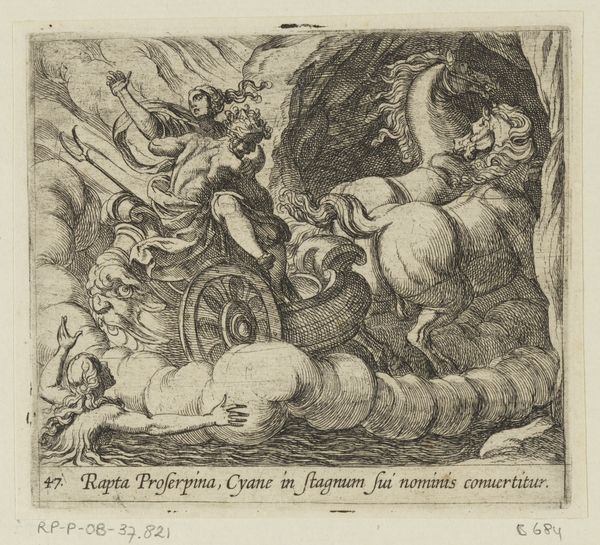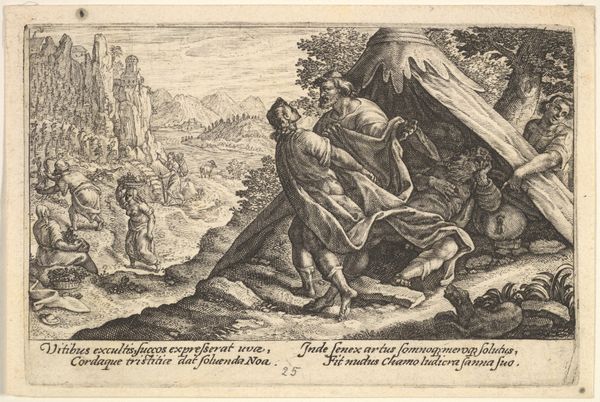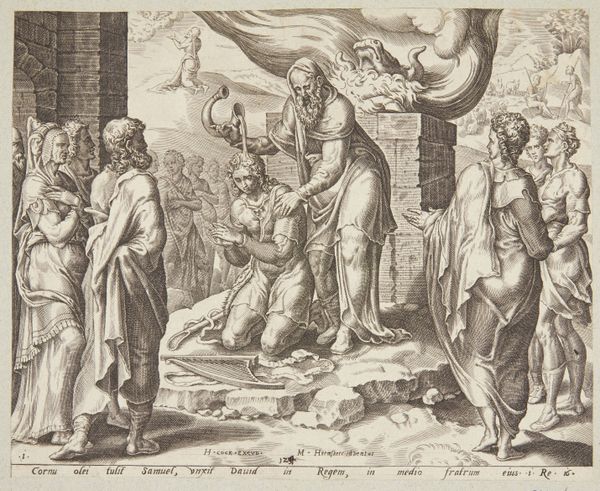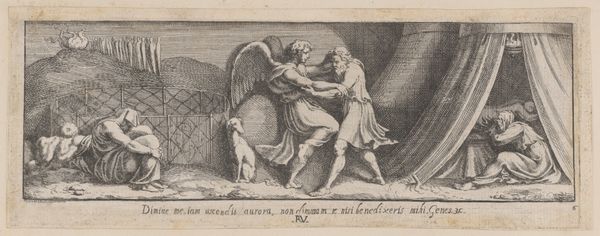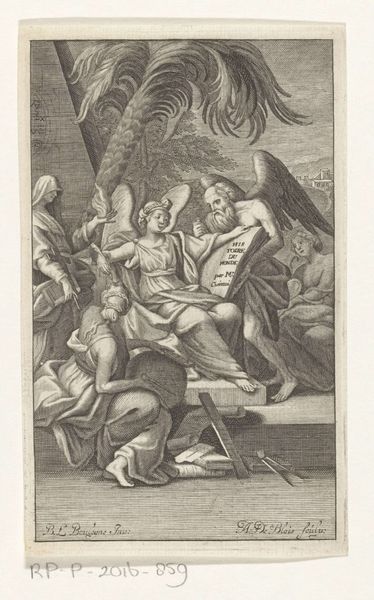
Plate 127: Anius's Daugthers Changing into Birds (Maeonides Pyrenei vim effugientes in aves), from Ovid's 'Metamorphoses' 1606
0:00
0:00
drawing, print, etching
#
drawing
# print
#
etching
#
bird
#
figuration
#
history-painting
#
italian-renaissance
Dimensions: Sheet: 4 1/8 × 4 9/16 in. (10.4 × 11.6 cm)
Copyright: Public Domain
Curator: Welcome. Today we're exploring Antonio Tempesta's 1606 etching, "Plate 127: Anius's Daughters Changing into Birds from Ovid's Metamorphoses," currently held at the Metropolitan Museum of Art. Editor: It strikes me as a rather frenetic scene, even in monochrome. There’s a sense of panicked flight, but it’s also carefully constructed, that diagonal movement. Curator: Tempesta, during the Italian Renaissance, was intensely focused on process. Etching allowed for wider distribution of imagery. The very act of creating prints, using acid to bite into the metal plate, mirrors the transformative moment depicted in the Ovid story. We see these figures in various stages, transitioning from human to bird. Editor: Yes, that liminal space between forms is key. The image, drawn from Ovid, carries a lot of cultural baggage. Birds, across cultures, represent freedom, the soul's flight, and divine connection. Their transformation speaks to escaping earthly constraints, almost an alchemical shift. It makes me think of the cultural perception of women— flight is the way to survive. Curator: Consider the economics of printmaking at this time, the workshop production line to fulfil this work as affordable images. Tempesta is using skilled labor, but churning out volume, undercutting any notions of precious art, pushing this kind of mythological illustration into broader social circulation as well. Editor: Exactly. The democratization of myth, thanks to this medium. These aren't just aesthetic objects; they are vessels of stories and, like I mentioned, deeply entrenched symbolism that would be widely accessible. Each tiny line and curve speaks of both individual agency and a larger pattern, connecting classical narrative with daily lived experience. It does a great job reminding us about those transformations in our ordinary, material lives. Curator: And it's these layered material, social, and symbolic complexities, not the surface beauty alone, that make works such as this particularly fascinating. Editor: Absolutely. Beyond the immediate visual, this print presents ongoing and culturally inherited stories on transformation, resilience, and our persistent search for meaning.
Comments
No comments
Be the first to comment and join the conversation on the ultimate creative platform.
